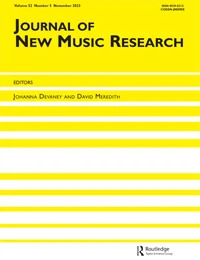Author: Poudrier, Ève & Daniel Shanahan
Publication details: Journal of New Music Research, Volume 52, Issue 5
Weblink: doi.org/10.1080/09298215.2025.2453697
Abstract: Although a great deal of research has delved into the perception of rhythm and metre, relatively few studies have focused on how listeners perceive and aesthetically evaluate complex musical rhythms. Here, we ask what it means to perceive something as rhythmically complex, and whether there are affective, cognitive, and motoric correlates of rhythmic complexity in the context of twentieth-century music from Europe and North America. This paper examines how listeners respond to complex polyrhythms in terms of how they convey ‘mood’, ‘energy’, and ‘movement’, as well as three descriptors borrowed from Bartel’s (1992) Cognitive-Affective Response Test (‘exciting’, ‘structured’, and ‘complex’). Listeners’ ratings are compared with features derived from a corpus of short polyrhythmic examples analysed using a number of possible metrics for structural ‘complexity’. The findings point to significant effects of selected rhythmic variables, such as composite event density (notes per seconds in human performance), nested ratio (proportion of coinciding events across parts), as well as the ratio of event density and the differential in note-to-note variability between component rhythmic layers. Composite event density and nested ratio were positively correlated with most rated qualities, while event density ratio and note-to-note variability had variegated effects. Effects of several pitch-related features such as pitch height and sonority dissonance, as well as more basic aspects (duration and number of staves) were also observed. This paper argues that elements of rhythmic complexity play a significant role on perceived affective, cognitive, and motoric qualities of music, and proposes methods and measurements for further investigation.
